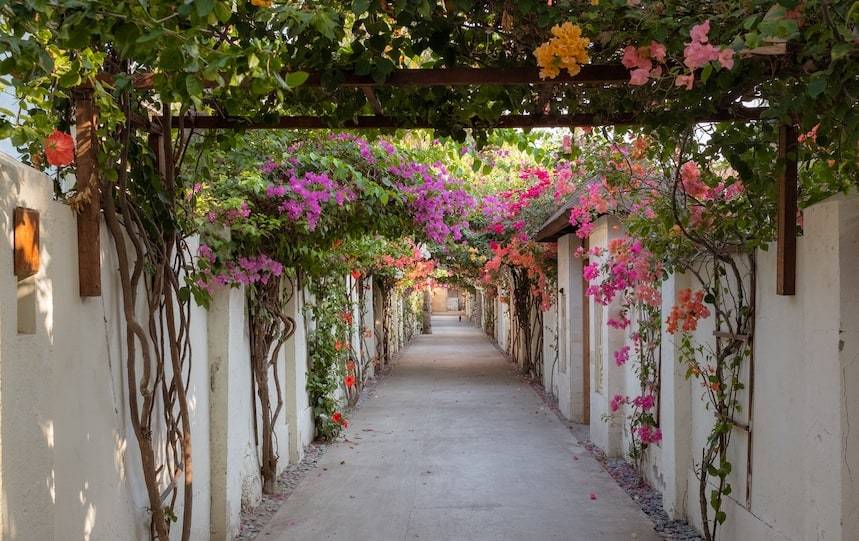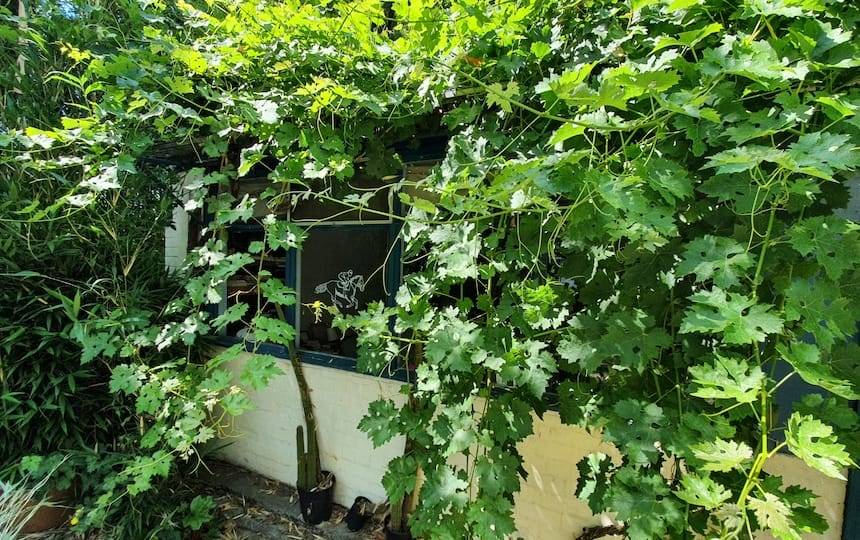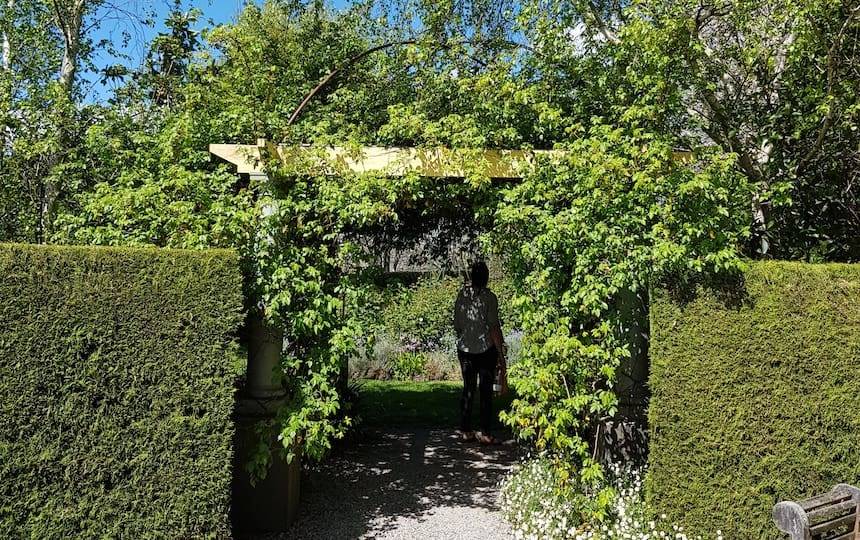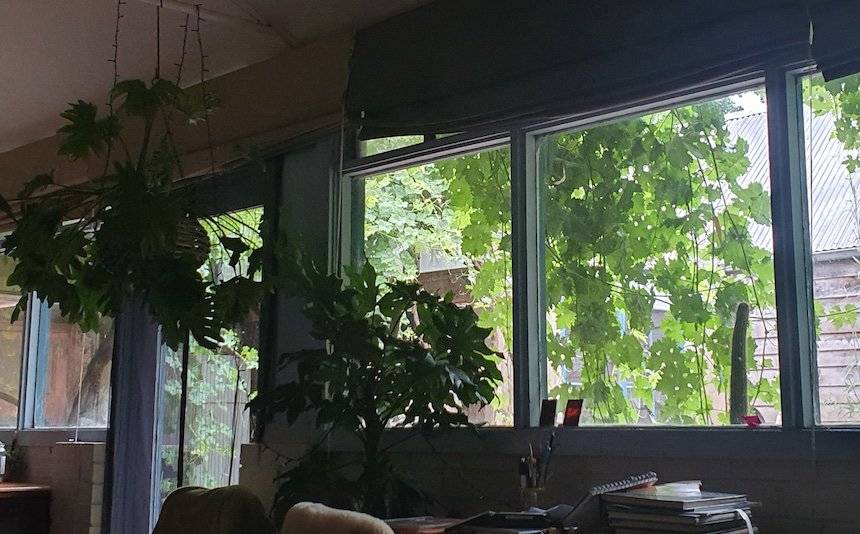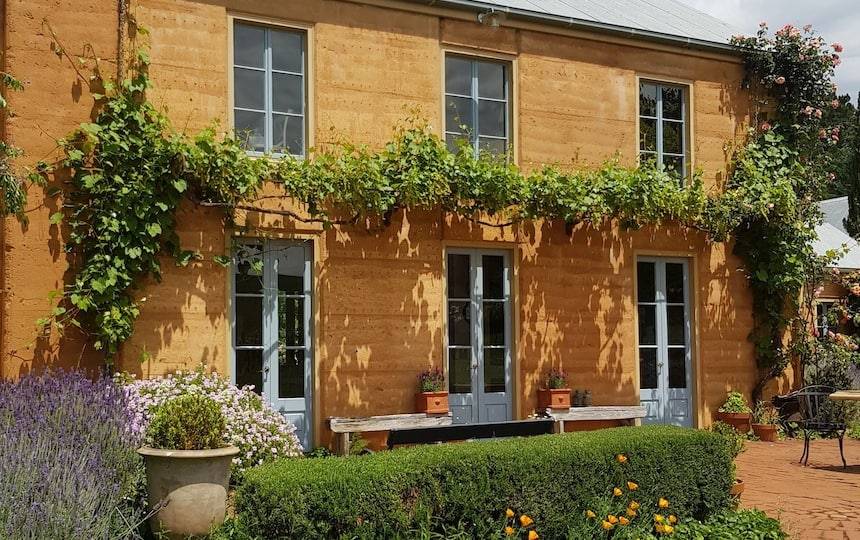Using deciduous plants to complement your home’s heating and cooling systems makes good sense, especially when you can expand your food-growing capabilities at the same time.
Sunshine fills our home with welcome warmth and light and is crucial for plant growth. However, on those long, hot summer days, it can often be a case of too much of a good thing.
That’s where well-placed deciduous plants come in; they can protect both our homes and our gardens from extreme heat in harsh Australian summers, while creating valuable warmth and letting in important light over the cold winter months.
Large trees
The most obvious deciduous shade option is a tree. A large deciduous tree can provide important shade, especially when blocking afternoon sun from a house or garden.
In summer, the canopy creates dappled shade to sit or work under before losing its leaves in winter to make way for light and warmth.
Similarly, smaller deciduous varieties such as fruit trees can create a microclimate in a vegie garden where more sensitive greens can thrive – with the added benefits of a fruit harvest for you, blossoms for the bees and an impressive show of autumn colour.
However, the problem with relying on trees alone for shade is that it can takes years – sometimes a generation – to reach their shading potential. Trees also come with other complications; they can dominate the landscape, use more than their fair share of water and nutrients, they can drop limbs and even cast larger shade areas than you may want.
Vines
Another way to introduce deciduous plants/shade is through the planting of deciduous vines such as grapes, which grow a lot faster than trees.
Besides creating dappled shade when they’re at their most vigorous in summer, they can supply you with a bountiful crop.
Ornamental grapes also tend to be very vigorous and so can be employed when the area you need covered is vast, meaning the shade can be achieved in a shorter amount of time.
Vines require a structure to grow on and there are many different ways to incorporate them into a landscape, such as trellises, wires, awnings, arbours and large pergolas.
Arbours in gardens
Anyone who’s lost plants to sunburn will know gardens also benefit from protection from harsh summer sun.
Arbours are an effective way to introduce shade without having to wait for a tree to grow and can be constructed out of any material which will hold the weight of a vine as it grows.
Heavy timber arbours are popular in more formal garden settings, however it is possible to create an inexpensive and efficient tunnel of green and shade by simply bending a large sheet of reo mesh or steel hoops over a path.
While it is typical for an arbour to be used to create a covered walkway, if an arbour’s well-placed at the western edge of a garden area, the structure and vine will also block the western sun to the garden as the sun gets lower in the sky. The arbour can also be used as vertical space for growing beans or other climbing plants.
While growing food up a trellis makes the most sense, another popular vine for shade-creating structures is Wisteria. It is vigorous, can become very large and heavy, and it produces beautiful and fragrant flowers (which are actually edible) in spring.
Non-deciduous passionfruit vines are successfully used to create shade on arbours and awnings all year round, and Kiwi vines – which are deciduous – do best in areas which already receive some afternoon shade. Annuals like pumpkins, or perennials like hops can also be fun and effective when grown over a structure.
Awnings and pergolas
Some well-designed houses have large windows facing north to capture winter sun, providing passive solar heating in the winter. Such houses particularly benefit from the construction of structures above or around windows to allow for the establishment of deciduous vines in order to block the light in the summer.
The main areas where you might want to create shade are windows which receive direct sun, specifically on west- or north-facing walls which heat up during the day, store and then release heat into the house.
Most houses, but not all, have eaves built in to block direct sun to windows, however they’re not always effective. Often an area in front of a windows is paved and therefore reflects sunlight and heat into the windows and doors. Pergolas are particularly great at preventing paved areas from becoming unbearably hot.

